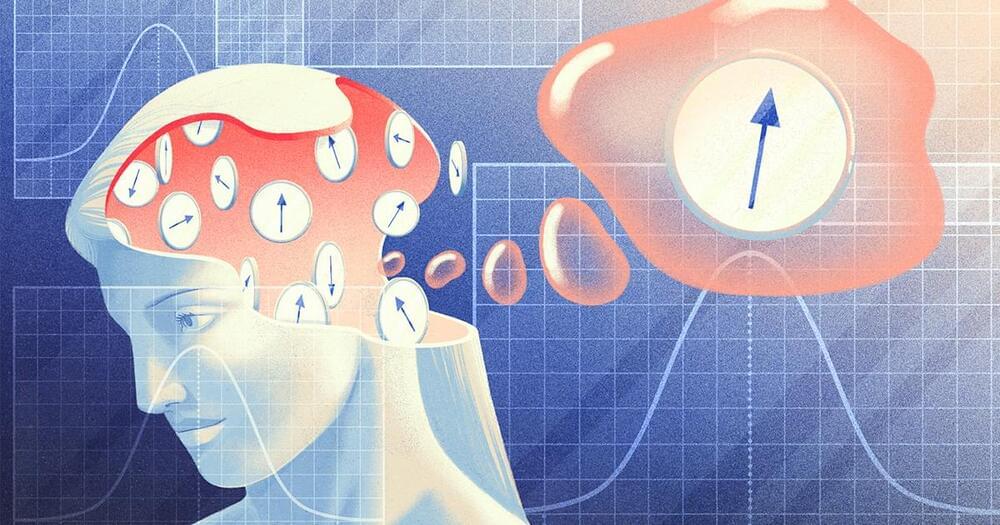Scanning for Memories
At the time there was almost no evidence of this from neuron studies. But in 2006, Ma, Pouget and their colleagues at the University of Rochester presented strong evidence that populations of simulated neurons could perform optimal Bayesian inference calculations. Further work by Ma and other researchers over the past dozen years offered additional confirmations from electrophysiology and neuroimaging that the theory applies to vision by using machine learning programs called Bayesian decoders to analyze actual neural activity.
Neuroscientists have used decoders to predict what people are looking at from fMRI (functional magnetic resonance imaging) scans of their brains. The programs can be trained to find the links between a presented image and the pattern of blood flow and neural activity in the brain that results when people see it. Instead of making a single guess — that the subject is looking at an 85-degree angle, for instance — Bayesian decoders produce a probability distribution. The mean of the distribution represents the likeliest prediction of what the subject is looking at. The standard deviation, which describes the width of the distribution, is thought to reflect the subject’s uncertainty about the sight (is it 85 degrees or could it be 84 or 86?).
